Growing up as a racing fan, I was always drawn in by the close-quarters action of NASCAR, the speed of Indy cars at the 500, and the finesse of Formula 1 on faraway circuits. But one type of racing captivated me like no other.
From the first time it flickered on my cable TV, I was mesmerized by long-distance endurance racing, particularly the 24-hour races at Daytona and Le Mans. Aided by some flashy technology on four wheels, these races let mere mortal men and women become legends, defying time, light, and circadian rhythms to accomplish something great.
I always wondered what these races required from the winning drivers. How much did they sleep? How hard were they pushing? How could you even keep a car running without incident for 24 hours? I never imagined that I may one day learn the answers first-hand.
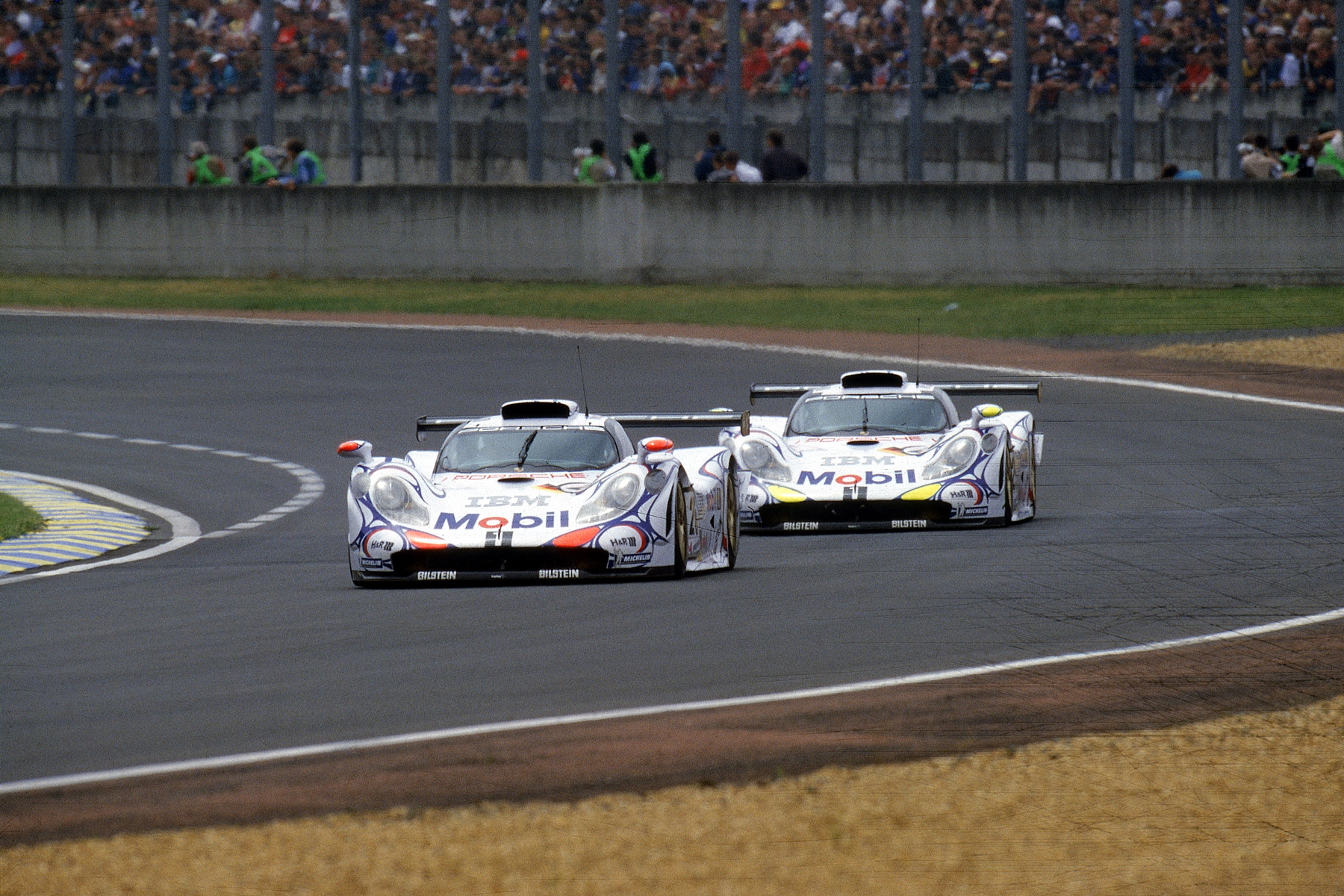
I grew up watching sports cars race for 24 hours around Le Mans, but never thought I’d be in such a battle myself.
On an old PC game that simulated the 24 Hours of Le Mans, I would crank up the time acceleration just to get a sense of racing into Mulsanne corner at sunset or navigating the tricky Porsche curves at night. Those races against computer opponents never lasted more than 30 minutes, but they still gave a taste of what the real thing might be like.
Not long after I joined iRacing, rumors began that they would soon add endurance racing. I impatiently waited for several years as development continued, and every year as another 24-hour race at Daytona, Le Mans, Spa, or Dubai passed, my longing to race there myself only grew.
During that time, I prepared by running some shorter two- or three-hour races. While I was rarely the fastest driver, I managed good results through strategy and survival. After all, endurance racing often rewards smarts over speed, like when Dan Gurney won the first Daytona endurance race in 1962 by creeping across the finish line with a blown engine rather than running an extra lap and risk stopping on track.
iRacing’s endurance racing feature was finally released late in 2014, and I had my first chance to run a 24-hour race the following January with the Masters of Endurance series at Spa. Our team of six drivers made it to the finish in the top half of a competitive field, and I achieved one of my long-time endurance racing goals: running the sunrise stint in a 24-hour race, even if it was only sunrise outside my window and not in the virtual world.
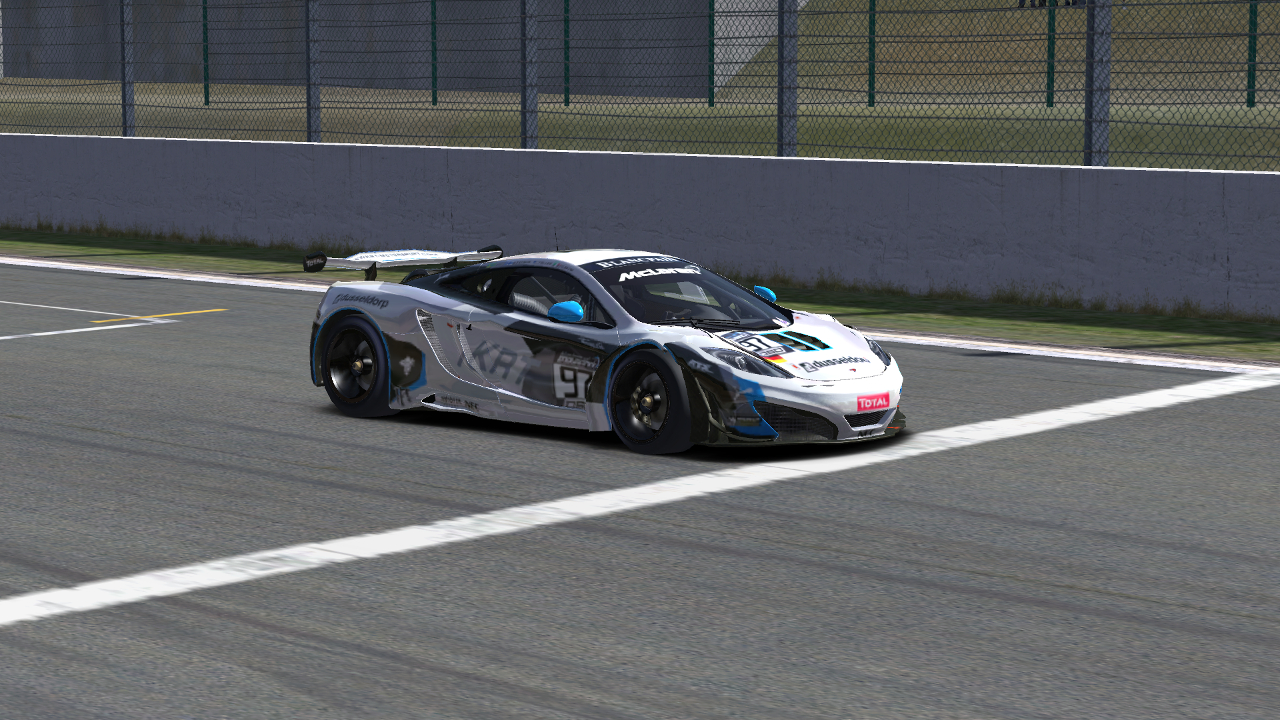
In my first 24-hour race at Spa, our car was slightly damaged but still made it to the finish.
My next 24-hour drive came at the same track last August, and it was one of the most heartbreaking defeats in my sim racing career. After a resilient drive by my teammate Karl to get us to the race lead, I wrecked out in an early-morning stint, hampered by lack of sleep and a momentary loss of focus, and cost us a likely win.
My third attempt at a 24-hour race came last weekend in the 24 Hours of Daytona. My teammates at KRT Motorsport were putting their time and manpower into a separate race, so I joined three of my competitors from the Sunday-night stock car-based Power Series in an entry for iRacing Today Motorsports.
Going into the race, I had a lot of confidence in my teammates but not as much in myself. We were running the Corvette Daytona Prototype, which I didn’t even own until our race practice began. And as a GT driver at heart, I had little experience running prototypes in multi-class situations.
Fortunately, my two scheduled three-hour stints went well. I had no incidents to speak of, and I was patient in traffic — well, mostly. My race laps weren’t as good as what I’d run in practice, but as I came to grips with the rubbered-in track thanks to tips from teammate Chad Dalton, I found a consistent pace and even led some laps while keeping our car solidly inside the top three.
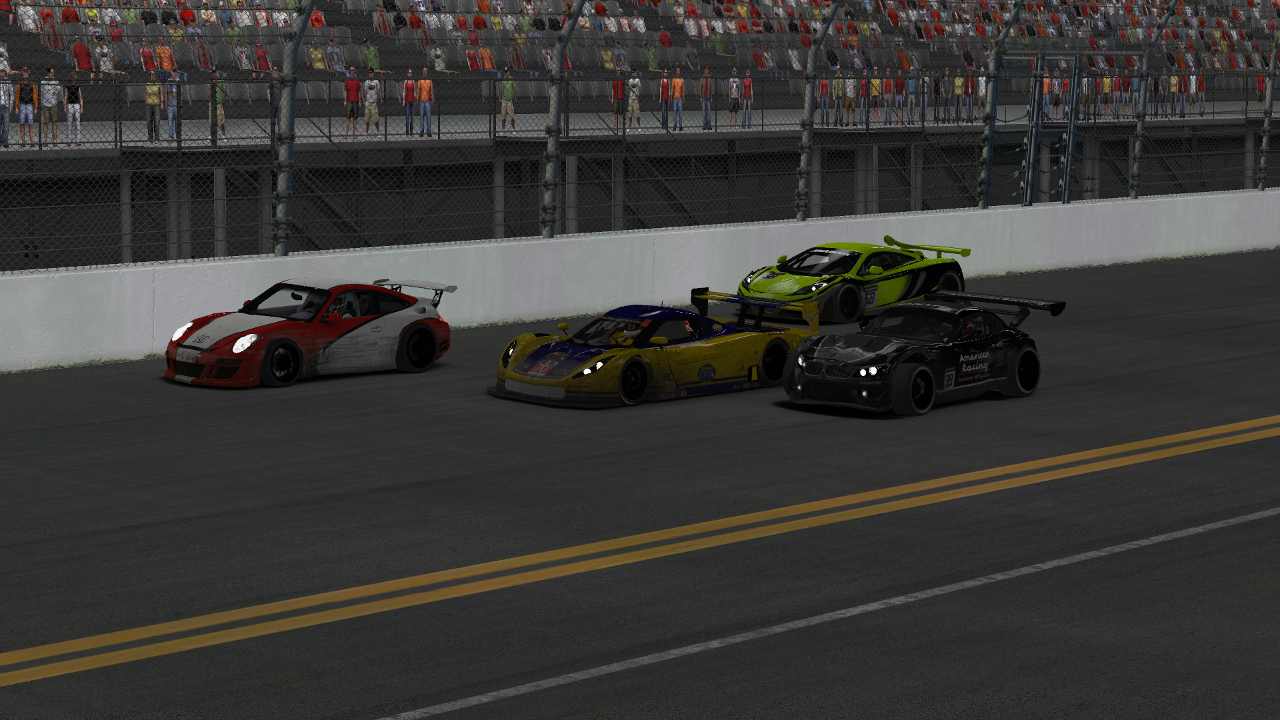
Okay, I wasn’t entirely patient with traffic. In my first stint, I couldn’t help but split GT cars three-wide down the backstretch.
My second stint finished around 3 am, and I had planned to get a few hours of sleep before waking up to help my other teammates in their race. However, the driver who got in after me, Dean Moll, found even better pace and continued closing in on the race leaders. With so much excitement, there was no way I could sleep.
Halfway through Dean’s stint, a real-world problem came up for him and he needed to get out of the car. Our next scheduled driver, Tim Johnston, had steering wheel problems and couldn’t get in the car, so I hopped back in at about 5 am — around the same time I’d crashed out at Spa with just as little sleep.
I’ll admit that the Spa crash replayed in my mind, and fears grew that I’d find the same fate this race: crashing during a momentary loss of focus while contending for the lead. Fortunately, I was much less fatigued and more confident this time around. Plus, energy drink and adrenaline coursing through me kept me alert.
During this stint, I ran my fastest laps of the race as I chased down and passed the leader. At the same time, our team had a big discussion over the radio. Tim was still scheduled to finish the race, but Dean had been our fastest driver, and having him drive would likely be our best chance to win.
With unanimous support and an extremely unselfish decision by Tim — a highly talented driver in his own right — to give up his final stint, we put Dean back in the car for the final two hours to go head-to-head against one of the fastest drivers for the team we were racing.
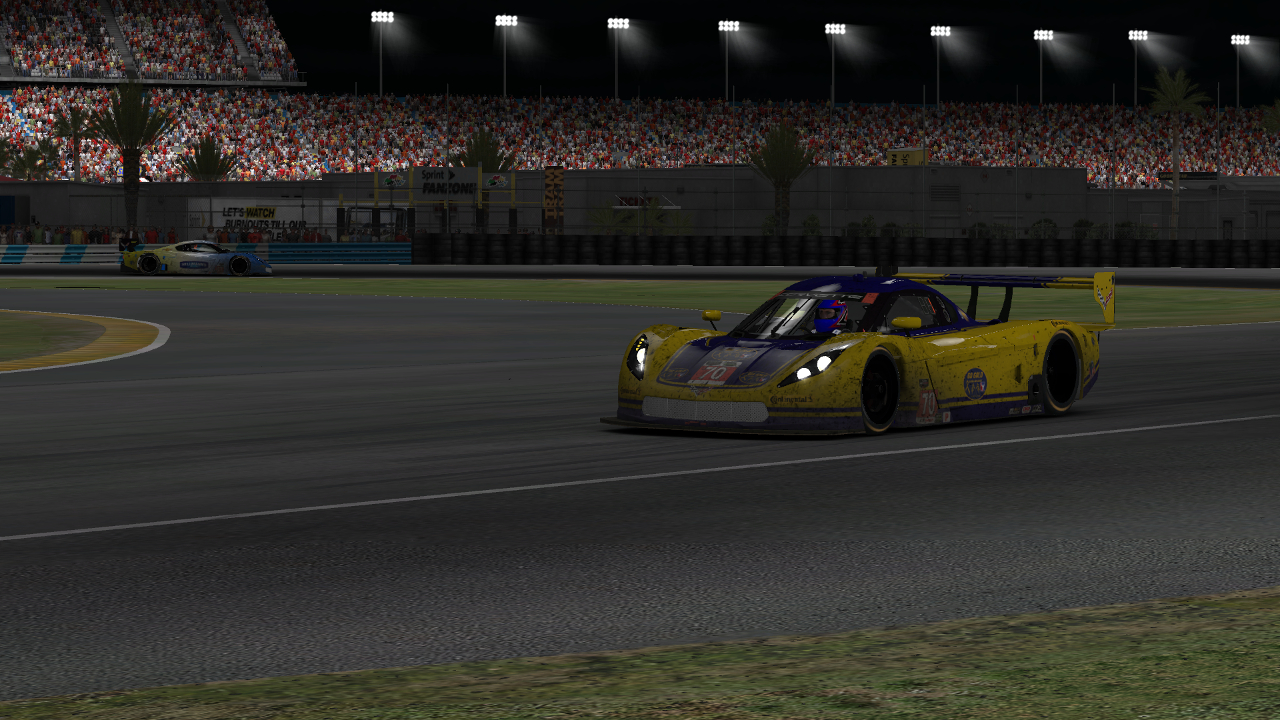
In the final laps, just one corner separated us from our closest competitors.
Pit strategy was a big story down the stretch. Our competitors needed two full-length pit stops for tires and fuel, while we planned just one full stop and a splash of gas at the end. As our differing strategies unfolded, both Dean and the driver he raced against ran their fastest laps of the race under immense pressure while the rest of us on the team were nervous wrecks.
In the closing laps, I played the crew chief role, doing calculations and recalculations to adjust our fuel strategy and counting down the laps and the gaps over the radio. After Dean made his final stop, he had a five-second lead with four laps to go. As the final laps and minutes ticked down, Dean held on and we won by just four seconds.
That margin in itself was extremely impressive. The real-world endurance events I grew up watching were rarely decided by less than a lap, and those had cautions throughout the race to bunch the field back up. So for 24 hours of pure racing to be decided by just a few ticks of the clock is almost unfathomable.
But what impresses me even more about the race is our teamwork. This race was the first time that the four of us had worked together, but it seemed like we’d been doing it for years. We each played our role when needed, whether it was driving, coaching, strategizing, or motivating.
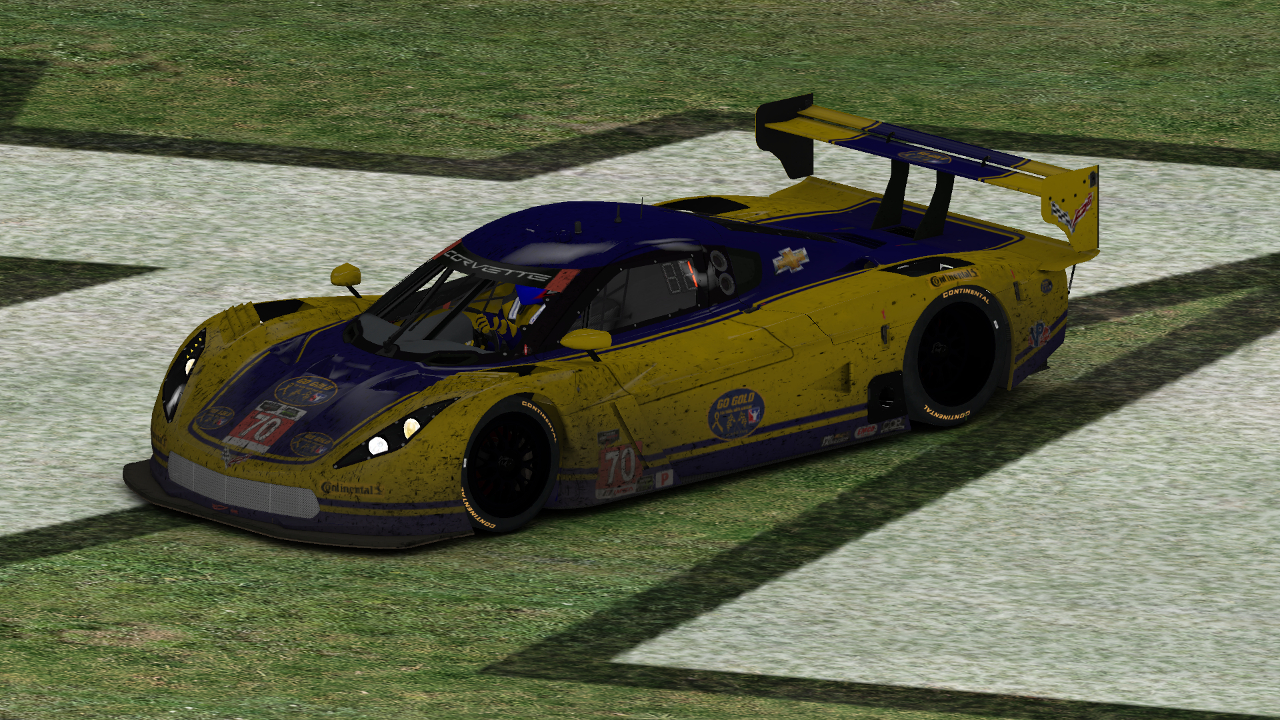
Our winning car after a post-race celebration in the infield grass.
Dean live-streamed the race from his perspective, and I’ve probably re-watched our discussion about the final driver swaps at least a dozen times. Every time, I remain amazed at our cooperation and action to put a plan in place for taking the win.
Although it still hasn’t quite sunk in that I — no, we — accomplished one of my lifelong goals to win a 24-hour race, I can finally answer those questions I grew up wondering about.
How much did I sleep?
None.
How hard did I push?
In my final stint, about as hard as I’ve ever driven while I chased down the leader and then tried to pull away.
How did we keep the car running without incident?
Like the whole race, it was a true team effort.
2 thoughts on “Truth in 24”
Comments are closed.